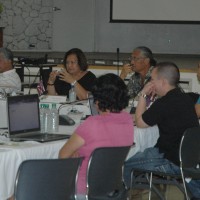
The Western Pacific Regional Fishery Management Council has expressed its disappointment with the announcement that President Obama will expand the Papahanaumokukea Marine National Monument to the full extent of the U.S. Exclusive Economic Zone (out to 200 miles from shore) to encompass a total 582,578 square miles around the Northwestern Hawaiian Islands.
Kitty Simonds, Council Executive Director said, “We do not believe the expansion is based on the best available scientific information.
“It serves a political legacy rather than any conservation benefits to pelagic species such as tunas, billfish, sea turtles, seabirds and marine mammals. ”
The campaign to expand the monument was organized by a multi billion dollar, agenda-driven environmental organization that has preyed upon the public’s lack of understanding of ocean resource management issues and utilized influential native Hawaiians and several high-level politicians to lead this initiative.
Simonds says, “Our government has chosen to follow the Pew’s Ocean Legacy.”
Last week, the Council provided Obama with two options for monument expansion that would have achieved the protection and legacy objectives that the proponents were seeking while also minimizing impacts to the Hawaii longline fishery and local seafood production.
According to Simonds, “The President obviously chose not to balance the interests of Hawaii’s community, which has been divided on this issue,” Simonds
Council Chair Edwin Ebisui Jr of Hawaii said, “Closing 60 percent of Hawaii’s waters to commercial fishing, when science is telling us that it will not lead to more productive local fisheries, makes no sense,”
He said said, “Today is a sad day in the history of Hawaii’s fisheries and a negative blow to our local food security.”
Fisheries are the state’s top food producer, according to the Hawaii Department of Agriculture.
The expansion of the Papahanaumokukea Monument is the fourth time a U.S. President has used the Antiquities Act of 1906 to create or expand a marine national monument.
All four of the U.S. marine national monuments are in the U.S. Pacific Islands.
Simonds said, “Our islands are populated by minority ethnicities.”
“We have little representation in Congress and are located 5,000 to 8,000 miles from the nation’s capital.
“Placing all of the marine monuments in our waters is a conservation burden to U.S. Pacific Islanders and is a socio environmental injustice, especially as we rely on the oceans for fresh fish that is our culture and our tradition.”




